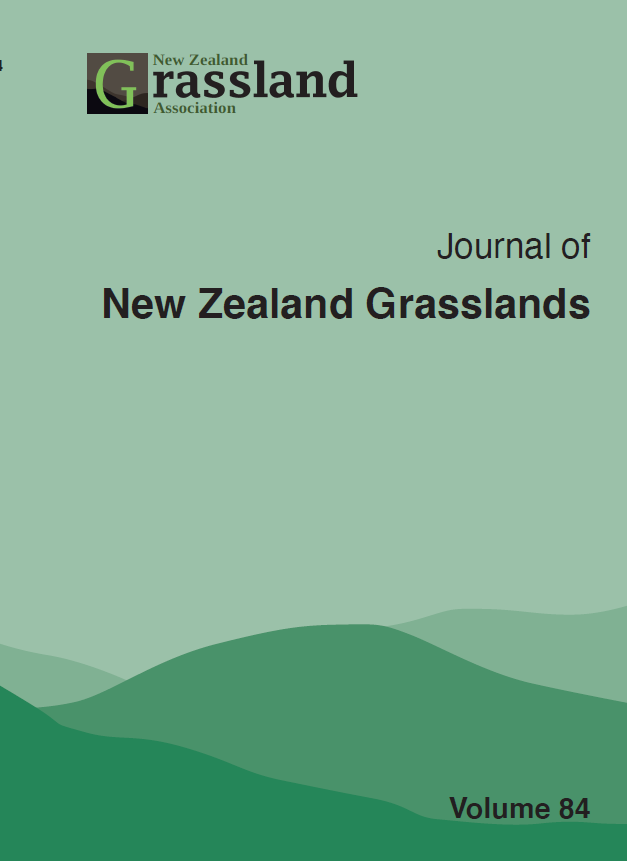Responses of Lotus pedunculatus to sulphur fertiliser and defioliation regime in acid soils at low temperature
DOI:
https://doi.org/10.33584/jnzg.2022.84.3570Abstract
The potential for Lotus pedunculatus is greatest in acid soils on hill and high country, but requires establishment success, nutrient supply and grazing management. This work investigated the role of sulphur fertiliser and the influence of defoliation regime on production of Lotus in low pH, high aluminium soils. Yields measured in year one were positively related to soil sulphate but not phosphorus. Sulphur, applied at two sites (low or high productivity) at 0, 24 or 78 kg S/ha, failed to alter yield over three years. The site, at 1000 m a.s.l., had base vegetation of unimproved tussock, low soil pH and P (4.8 and 7 respectively) and high Al (30-40 ppm). Yields ranged between 1900 and 3200 kg DM/ha/annum and was reduced when initial plant numbers were lower. Lotus contributed 65- 85% of the herbage for grazing (excluding tussocks). Yields were maximised by defoliation to 2 cm height each season or once in autumn. Establishing high plant numbers increased productivity. Single, late season grazing promoted rhizome development and resulted in the highest yields by year 3. Grazing to 2 or 5 cm
residual once a season produced similar herbage, but lower rhizome development.
Downloads
Downloads
Published
How to Cite
License

This work is licensed under a Creative Commons Attribution-ShareAlike 4.0 International License.
Copyright
This work is licensed under a Creative Commons Attribution-Non Commercial-NoDerivatives 4.0 International License. Rights granted to the New Zealand Grassland Association through this agreement are non-exclusive. You are free to publish the work(s) elsewhere and no ownership is assumed by the NZGA when storing or curating an electronic version of the work(s). The author(s) will receive no monetary return from the Association for the use of material contained in the manuscript. If I am one of several co-authors, I hereby confirm that I am authorized by my co-authors to grant this Licence as their agent on their behalf. For the avoidance of doubt, this includes the rights to supply the article in electronic and online forms and systems.




